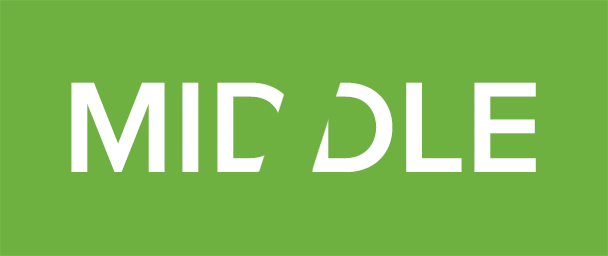
Today, Kiva entrepreneurs around the world are making fundamental changes in their own lives and the lives of their families -- from a Ugandan farmer looking to buy seeds and tools for increasing crop yields, to a talented seamstress hoping to start a business with a new sewing machine. But some entrepreneurs still face difficulties accessing the capital they need to create jobs and address larger, community-wide issues of poverty.
In industrialized nations, these small and medium enterprises (5 - 250 employees) are responsible for 75% of the workforce and 95% of the companies, yet in emerging markets they’re practically non-existent. This lack of small and medium enterprises in less developed countries, an essential part of strong economies, is what's known as the Missing Middle.

When an extensive World Bank study asked people living in poverty what they most need, jobs were one of the top answers not being addressed. And at Kiva, we believe the largest development gains are enjoyed not only when there is a thriving microenterprise sector, but when we also see a healthy number of businesses that employ others. That’s why -- with your help -- we’re supporting a greater variety of enterprises that seek to strengthen their communities and reduce poverty by expanding formal employment, scaling innovative social solutions and driving sustainable economic growth.
The Missing Middle
The issue of financial access is likely familiar to many Kiva lenders, as one of the core goals of microfinance is providing financial services to people left out of the system. But while microcredit now serves a large number of people in significant ways, it also has its limits: what if you’re an organization that seeks to address a community-wide issue of poverty? Or what if your business has an opportunity to create local jobs, but it would mean outgrowing the relatively small loans from a microfinance institution?
Unfortunately, it’s not as simple as just moving on to the traditional banking system and getting a loan from a local bank; that Missing Middle between microfinance institutions (MFIs) and traditional banks primarily exists for a handful of reasons:
For traditional banks and MFIs alike, lending to small enterprises isn’t financially sustainable. Financial services for small enterprises typically have low profitability, especially when compared to larger firms that traditional banks serve. Administering these small loans also involves substantial overhead costs for risk evaluation. While MFIs generally have well-developed systems in place to evaluate the credit history and risk of individual borrowers, they aren’t as equipped to perform a robust cash flow analysis on small businesses. To make matters all the more difficult, many small businesses lack the audited financial history which aids in this task.
And unlike microloans with monthly or even weekly repayment periods, these larger loans typically need a grace period for the investment to materialize -- sometimes several years. Consider the Arimae community in Panama: given the flexibility to start repayments in 2015, they were able to invest in their future with a $10,000 loan to expand plantain production, including seed stock and technical assistance. And with the harvest profits, they’ll finance community development projects and support legal efforts to secure their reservation.
Community-Wide Impact
As is true with the Arimae community, the benefits of larger loans on Kiva go far beyond addressing the need for financial access. Kiva lenders are already supporting many businesses that are making this type of an impact on a much larger scale.
For instance, one of Kiva’s exciting new Field Partners in this space is Yunus Social Business, co-founded by Nobel Prize laureate and “father of microfinance,” Dr. Muhammad Yunus. Last month, they posted a $49,950 loan to help start a café in Tirana that caters to Albanian youth with disabilities. Around 137,000 people in Albania are affected by disability, and because they face restricted access to communal venues, it can be very difficult to lead a normal social life. This café aims to not only create a space where all young people can work, socialize and showcase artistic talents, but it also aims to foster a spirit of inclusion -- by creating an opportunity for people without disabilities to appreciate how joyful, inspiring and unique the life of a person with a disability can be. The shop will also employ six young people with disabilities to work as managers, bartenders, waiters and helpers.
Another example with a sizable community impact is with Urwego Opportunity Bank, which just posted a loan that benefits all 170 members of the Dukundamatungo Dairy Co-op. Recent truck problems slowed the co-op’s business activities, and it's prohibitively expensive to hire smaller cars twice a day to transport milk from the collection center to where it can be processed. They requested this $23,850 loan to buy a truck that can handle transporting the increased milk production and ultimately reduce their overhead costs. With profits from selling milk, they will also reinvest in their businesses and community by buying coolers and restocking their animal pharmacy.
And in Rwanda, the Paradigm Project posted a $18,725 loan to help Amri buy 2,880 clean cookstoves to sell to women’s groups. An estimated 8.5 million people in Rwanda are affected by household air pollution caused by cooking over open fires, and these stoves can have a meaningful impact not just on a family’s health, but their finances and environment too. A single stove reduces toxic emissions by 70%, saves a family up to 15% of their income, and prevents the destruction of 33 trees.
Funding enterprises alongside individuals
We are more excited than ever about the opportunity to create substantial change by providing affordable capital to individuals and communities. The opportunity for all of us to make a difference here is huge, and by starting to fill the Missing Middle alongside traditional microloans, we believe that we can begin building the foundation from which communities can flourish not just today, but well into the future.














